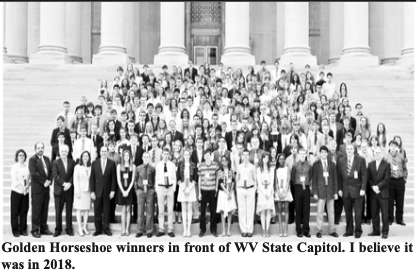By Patricia Harris, President, DC Historical Society
Kincheloe Man Soon To Become A Centenarian – Earl Richards To Celebrate 100th Birthday
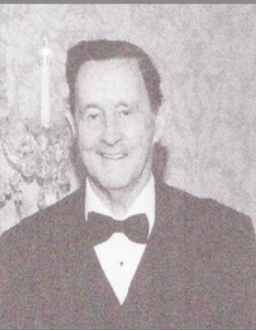
This week I received a phone call from a very kind gentleman by the name of Forest Moore. He told me that we had been blessed to receive an autobiography book by, Doddridge County born Earl Richards if the Historical Society wanted it for the museum library.
I, without hesitation, replied, “Yes. We’d be honored to add it to our genealogy room collection.”
Mr. Moore dropped it off at the Doddridge County Library for us to pick up and we soon did. After which I sat down and began reading his fascinating story. It was so interesting and moving that I wanted to share some of it with you.
Earl Richards will celebrate his 100th birthday on October 2, 2022. It is difficult to believe how strong and amazing he is still today. He is as fit as some people who are thirty years or more younger than him.
The son of Hiram B. and Lora Louise Jarvis Richards, Earl was born on a farm on Oct. 2, 1922, at the head of Richards Hollow in Kincheloe, near Big Isaac. His mother was a twin (twin sister’s name was Ora). He was one of ten children. His siblings’ names were Buffalo, Pearl, Roxie, Harry, Ruth, Fred, Frank, Peck, Gaye, and Earl. According to Earl, their home was a small six-room house that barely kept the cold out. He said that this small house became their home after their large 2-story house burned. He believed it may have burned due to an oil lamp being knocked over while the kids were “roughhousing.”
Education involved walking two and a half miles after bringing in and milking the cows. This they did until Morris Funeral Home started driving hearses. His father purchased all of their buggy and dead wagon gear (a wagon used to carry the deceased). After that, they didn’t walk to school anymore. They tore up the wagons driving them back and forth to school.
Like most families at that time, bath time was a chore. First you had to heat the water and pour it into a small iron tub. This they did once a week, every Saturday morning. Earl said he was lucky because he was the youngest, so he got to take his bath first.
Earl and his siblings attended Benson School. He said that one of the highlights of the school socials was auctioning off the fancy boxed lunch- es prepared by the girls. Some of the boys would have their eyes on a particular box prepared by a girl they ‘fancied’ and the other boys got together and bid on it to drive up the price.
He remembered working in the hay field before there were machines to ease the labor it involved. He said they would cut the hay, then waited for it to dry enough to stack. They would make the hay into shocks. A long sharp pole with a drawstring was attached to the horse’s harness, which was then slid under the shock of hay and pulled taunt. This was then pulled by the horse to where the haystacks were being built.
He remembered one morning when they were putting up hay, they no- ticed Pete Stutler across the fence putting up his hay using his Model-T. Naturally, he said, the race was on. Both sides were working at breakneck speed, but our team pulled out the win with Roxie tossing the last shock of hay on the stack before Stutler’s team.
It was Earl’s brother, Harry’s, job to take the mule, horse, and wagon to Weston to pick up a load of feed. He remembered that some of the kids would wait for him to return from the 40-mile round trip. Harry would stop to rest the team along the way. He said it was always a challenge be- cause the horse always needed to rest, but the mule never wanted to stop.
Earl said they were always building or repairing fence to keep in the cattle. He noted that some of the fence they built when he was a boy was still there today. He said his father crafted a tool using 5/8” cable from an oil rig, which expedited the job. He, Fuzzy, and Lyle built the same kind of fence in 1965.
“I like to think it will last as long as the ones my dad built,” he said.
Then there are the stories of the skunk hunting adventures… He said they would start catching skunks about 2 weeks before season and hide them under the chicken coop. Then when season came in, they would kill them, sell their hides, and use the money to buy our clothes.
Another adventure came when one morning before daylight, Dad told Frank and Earl to go bring in the sheep. In the process, they ran across a skunk, and it seemed like a good idea to run it in with the herd. To en- courage its participation, Earl prodded it with a stick. He said that was thefirst and last time he ever went up against a skunk… The skunk sprayed him in the eyes.
“Big Isaac was a booming place in the 1940s,” Earl stated. “There were boardwalks, a hospital, 3 country stores, and Ace Bennett’s theatre with shows every weekend. Just a mile outside of the bright lights of Big Isaac, large crowds also gathered for boxing matches every Tuesday night. The gas lights and excitement drew crowds from Salem, Clarks- burg, and surrounding towns.”
Earl met his beautiful wife, Norma Jean Jarvis in 1944. She was 15 and he was 21. After they had been dating for a while, Jean moved to Cincin- nati, OH for work. They continued to have a long-distance relationship and after 6 years, Jean returned home. They were married on July 24, 1950. She was 21 yrs. old, and he was 27 yrs. old.
The happy couple were blessed with the birth of four children, Darrell (Fuzzy), Joyce, Jeff (Lyle/Red), and Bonnie.
Earl worked at a part-time job for Hope Natural Gas (known as at the time) until he went to work for Black Rock Contracting operating heavy equipment, a job he held for more than 30 years.
Earl became a devout Christian in the mid to late 1960s and has served the Lord for the last 57 years. He stated something in his book that stayed with me, and it was this… “When I got off the crane at work one day, a voice said, “Pick up a stone from the pile of gravel, put it in your pocket, and when you see someone with more fault than you, throw it at him.” He stated that after carrying it around for more than a year, he got rid of it, as he knew that only God was without fault and could pass judgement.
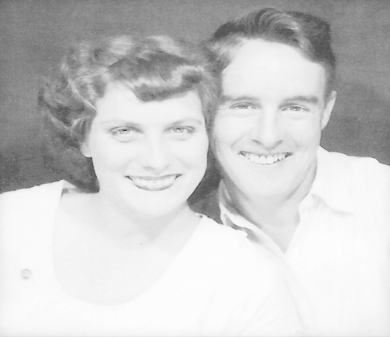
Earl’s wife, Jean, passed away in 2002. They had been married for 52 years. It was devastating time for him. He wrote about the lonely times without her and how his children and grandchildren helped him to adjust. He said that she worked harder than anyone he had ever known taking care of their home, their 4 children, and many of the farm animals. He has lived alone for nearly 20 years now. He now lives on his farm where he plans to spend the remainder of his years.
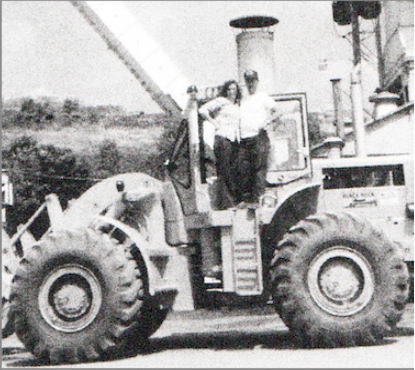
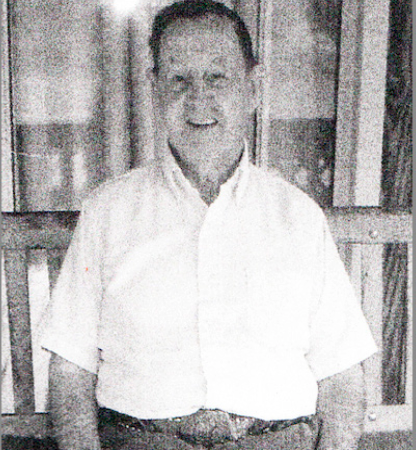
There are so many wonderful stories, such as his hunting adventures; going after the cows barefoot; dealing with personal loss; and so much more. I would love to share them all, but time and space does not allow. So, you’ll have to find a copy of his book to read more of his amazing life’s story
Good-Luck with your 100th birthday coming up on October 2nd, Earl. I know that everyone in the county and beyond will want to wish you a Happy Birthday!
God Bless
Patricia Richards Harris
Doddridge County Historical Society

